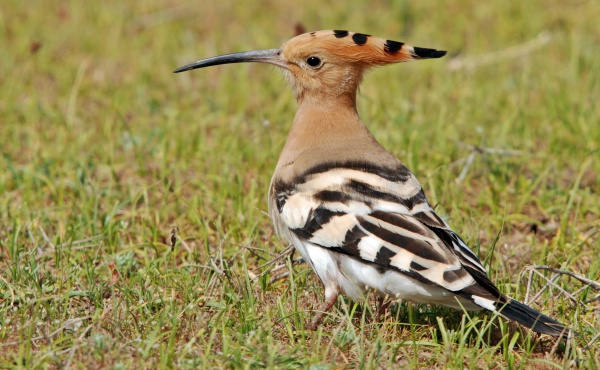Facts About Eurasian Hoopoe
Hoopoes are vibrant and fascinating birds, easily recognized by their striking "crown" of feathers. These birds inhabit regions across Africa, Asia, and Europe. Initially, they were thought to represent a single species, but it is now understood that there are three extant species and one extinct species. Taxonomically, hoopoes are classified within the order Coraciiformes, although some experts place them in Upupiformes or Bucerotiformes. The fossil record for these birds is limited, with the oldest known fossil dating back to the Quaternary period.
The extant species include the Eurasian hoopoe, the Madagascan hoopoe, and the African hoopoe, while the extinct species is the Saint Helena hoopoe. These birds have specific habitat requirements, preferring areas with bare ground for foraging and vertical surfaces for nesting. They can be found in diverse environments, from heathlands to farmlands. However, anthropogenic activities such as agriculture have altered their habitats, resulting in population declines in certain regions.
Hoopoes primarily feed on insects but also consume small reptiles, frogs, and plant matter. They exhibit unique foraging techniques and possess distinct methods for defending themselves against predators. Hoopoes are monogamous and territorial, with females taking on the role of incubating the eggs. The young are well-protected in the nest and typically fledge after about a month.
Culturally, hoopoes have made a significant impact. They are mentioned in ancient texts such as the Torah and the Quran and were considered sacred in Ancient Egypt. Different cultures attribute various symbolic meanings to hoopoes, associating them with virtues, leadership, and even malevolence. Today, they are protected in many countries due to their ecological role in controlling pests.
The hoopoe is also a national symbol in some countries. It is the national bird of Israel and appears in the coat of arms of several German municipalities. In Morocco, however, hoopoes are traded for medicinal purposes, which threatens their local populations. These birds have also appeared in popular culture, including children's TV shows, and have been studied and celebrated by notable ornithologists.

 Mali
Mali